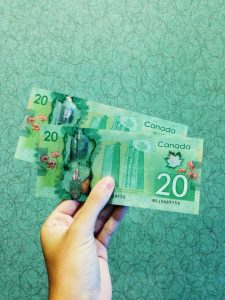Ichimoku Cloud is a technical analysis tool that is widely used in trading the Forex market. It was developed by a Japanese trader, Goichi Hosoda, in the 1930s. The Ichimoku Cloud is a complex indicator that consists of five different lines, which provide traders with a comprehensive view of the trend, support and resistance levels, and potential entry and exit points. In this article, we will cover how to use Ichimoku Cloud to trade Forex.
Understanding the Ichimoku Cloud Components
Before we dive into how to use Ichimoku Cloud to trade Forex, it is essential to understand its components. The Ichimoku Cloud comprises five lines, each of which provides vital information to the trader. The lines are:
1. Tenkan-sen (Conversion Line): This is the fast-moving line and is calculated by averaging the highest high and the lowest low over the last nine periods.
2. Kijun-sen (Base Line): This is the slower-moving line and is calculated by averaging the highest high and the lowest low over the last 26 periods.
3. Senkou Span A (Leading Span A): This is the first boundary of the cloud and is calculated by adding the Tenkan-sen and Kijun-sen and then dividing by two. The result is then plotted 26 periods ahead.
4. Senkou Span B (Leading Span B): This is the second boundary of the cloud and is calculated by averaging the highest high and the lowest low over the last 52 periods. The result is then plotted 26 periods ahead.
5. Chikou Span (Lagging Span): This is the current closing price plotted 26 periods behind.
Using the Ichimoku Cloud to Trade Forex
Now that we understand the components of the Ichimoku Cloud let us explore how to use it to trade Forex. The Ichimoku Cloud can be used to identify the trend, support and resistance levels, and potential entry and exit points.
Identifying the Trend
The first step in using the Ichimoku Cloud to trade Forex is to identify the trend. The cloud is bullish when the price is above the cloud, and the cloud is bearish when the price is below the cloud. The trend is considered to be strong when the price is consistently above or below the cloud.
Support and Resistance Levels
The Ichimoku Cloud can also be used to identify support and resistance levels. When the price is above the cloud, the first boundary of the cloud (Senkou Span A) acts as the first support level, and the second boundary of the cloud (Senkou Span B) acts as the second support level. When the price is below the cloud, the first boundary of the cloud acts as the first resistance level, and the second boundary of the cloud acts as the second resistance level.
Potential Entry and Exit Points
The Ichimoku Cloud can also be used to identify potential entry and exit points. When the price crosses above the cloud, it is considered a bullish signal, and traders may consider entering a long position. When the price crosses below the cloud, it is considered a bearish signal, and traders may consider entering a short position.
Additionally, traders can use the Tenkan-sen and Kijun-sen lines to identify potential entry and exit points. When the Tenkan-sen crosses above the Kijun-sen, it is considered a bullish signal, and traders may consider entering a long position. When the Tenkan-sen crosses below the Kijun-sen, it is considered a bearish signal, and traders may consider entering a short position.
Conclusion
The Ichimoku Cloud is a complex technical analysis tool that provides traders with a comprehensive view of the trend, support and resistance levels, and potential entry and exit points. Traders can use the Ichimoku Cloud to identify the trend, support and resistance levels, and potential entry and exit points. However, it is essential to note that the Ichimoku Cloud should not be used in isolation but should be used in conjunction with other technical analysis tools to make informed trading decisions.





